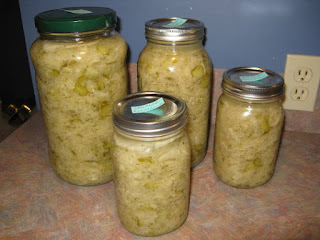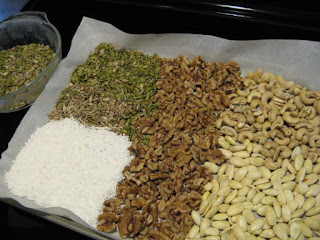 |
| Second day of snow ~ Jan. 16th, 2020 |
 |
| Frozen core and cabbage tip burn |
 |
| Lennox Cabbage harvest ~ January 12th, 2020 |
When all was said and done, I had over 6 quarts for the first ferment with dill weed and minced garlic added. After 8 days I dumped all the kraut into a very large, sterilized stainless steel bowl and mixed in 2 quarts of thinly sliced, fermented dill pickles I made last summer. Then the mixture was packed again into jars and topped up with a new brine ... a mixture of the original kraut brine and dill pickle brine.
These jars were then left to ferment
 |
| 8 Quarts of finished Garlic & Dill Pickle Kraut |
I had just finished eating last years batch so timing was good. This is a long and time consuming process but always worth the effort.
 |
| 1st winter carrot harvest ~ January 25th, 2020 |
Just 3 days ago I removed the mulch from a small section of the first planted carrot bed and pulled the first winter carrots ... amazing!! Not sure if you recall, I had stopped growing carrots and parsnips because of the problems with carrot rust fly. Last summer I was determined to experiment and go through the arduous process of keeping the carrot beds covered with remay until late October. I'm thrilled to announce it worked! The carrots are clean, insect free, sweet, juicy, crunchy goodness!
After growing up in Alberta, I'm always so amazed and grateful for the food we can grow and harvest 12 months of the year here on the West Coast. The kale is small but so sweet after the cold weather and the garlic has poked through the mulch with shoots about 3" tall now. I've still got lots of carrots and some beets in another bed that were planted the end of June 2019. If the weather warms up too much, they will start to get 'hairy' and tough so they'll have to be pulled, washed and stored in the fridge. Not a problem, these carrots are worth the effort ... I love my winter garden harvest!
Until next time... Happy Winter Gardening and Bon Appétit!
Photos by Sally Rae
Garlic and Dill Pickle Sauerkraut by Sally Rae


